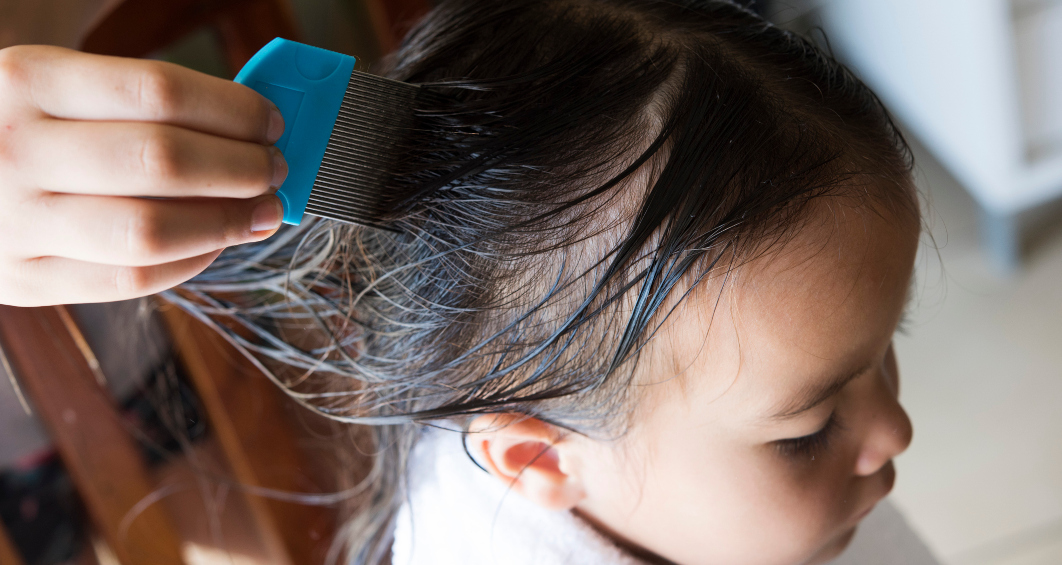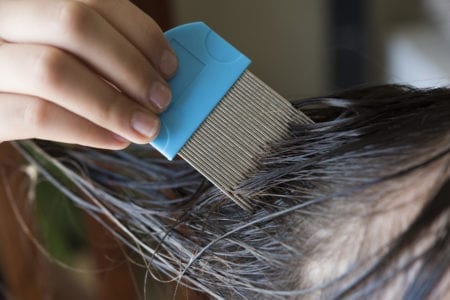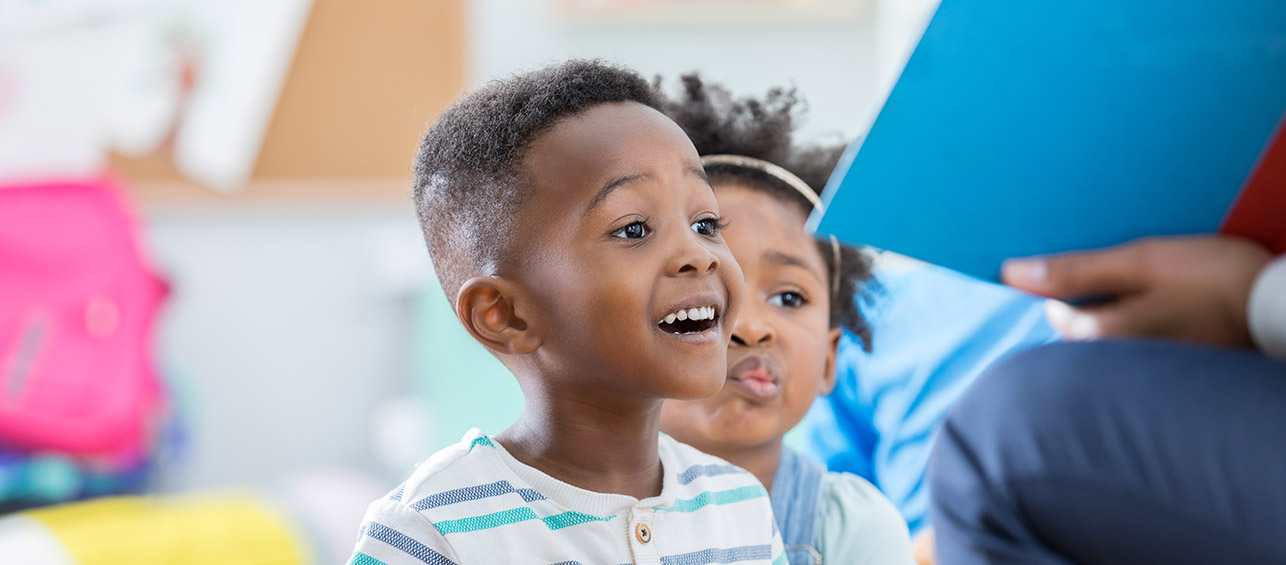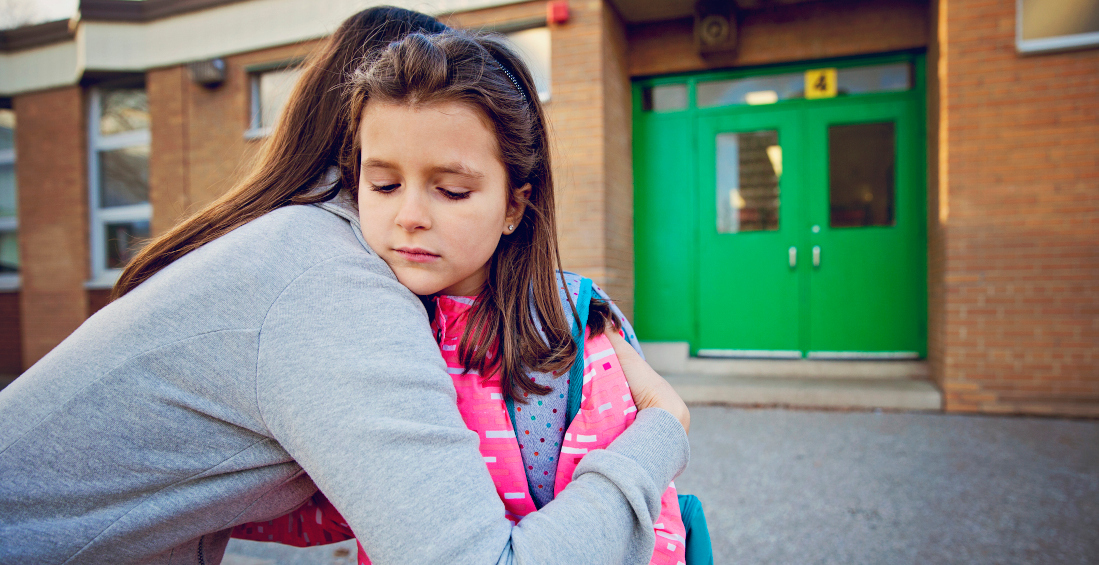When kids head back to school, they sometimes bring home more than just homework. It’s when we see an increase in head lice in children. In the United States alone, roughly 6-12 million kids from ages 3-11 get head lice each year.
Lice spread easily from one child to another. That’s why now is the time to pay close attention if your child complains of an itchy scalp or if your school sends out an email notifying you of an outbreak. Such a letter might cause instant anxiety, but read on — the more you know, the better equipped you’ll be if head lice appear in your home.
FACTS ABOUT LICE
Head lice are parasites that feed on human blood. While that may sound gross, the good news is they are not dangerous. They do not carry or transmit disease and are more of a nuisance than anything else.
The eggs of lice “glue” themselves to the hair shaft, and can be difficult to see as they often blend in with the hair of the infected person. After hatching from the eggs, lice remain difficult to see as they avoid light and move quickly. When lice hatch from the eggs, the empty eggshells left behind are called nits. It is important to remember that nits do not contain live lice.
Head lice spread mainly by direct head-to-head contact. It is possible, but much less common, for them to spread from clothes, hats, coats and other personal items like combs and brushes. This is primarily because lice are unable to survive away from the human head for more than 24-48 hours.
WHO IS MOST LIKELY TO GET LICE?
Kids of all ages can get lice and so can adults. Having head lice has nothing to do with personal hygiene. In fact, lice prefer to live in clean hair.
School-age kids are more prone to getting lice than adults because of how they interact — they put their heads together to chitchat or check out a tablet. While lice don’t jump, they can crawl from one person to another when their heads touch.
It is important to check all members of the family when one person has lice. Family members who share a bed with the infected person should be treated, regardless of whether or not lice are found on the scalp.
How Do I Know If My Child Has Lice?
Most often a child will complain of an itchy head, but not always. In some cases, kids can have lice but not have an itchy scalp. (Note: It’s not the lice themselves that cause the itching — some people are allergic to their saliva.)
Remember that lice can be hard to find. A quick brush-through of your child’s hair won’t do it. Have your child sit down, use a comb and go through the hair slowly in sections. It helps to wet your child’s hair and to use a very fine-toothed comb, along with a magnifying glass.
My Child Has Lice, Now What?
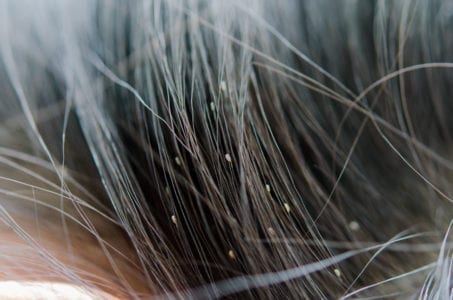
My no. 1 suggestion: Don’t freak out. You will want to treat the problem right away, but there’s no need to start disinfecting the whole house.
If your child has lice, you generally won’t need a visit to the doctor. These are the main ways to get rid of live lice and the eggs:
- Over-the-counter (OTC) medications. These use chemicals that are poisonous to live lice. It’s important to note that not all eggs are killed by these chemicals, making repeat or additional treatments necessary.
- Professional head lice treatment salons. These have been increasing in popularity, and they are a good option. At these salons, professionals remove lice without medication by using a fine comb. While this option can be pricey, it means that your child’s scalp will not be exposed to any harsh chemicals. And often the price includes a free re-check within a certain time period to ensure the lice are gone. Look for a salon that offers all natural lice removal.
- Home remedies. These include using products such as mayonnaise, which are thought to suffocate the lice. This can be a messy but inexpensive option. Home treatment can also include thoroughly combing out the lice, eggs and nits, and doing frequent re-checks to ensure all have been removed.
- Prescription medications. In some areas of the country, lice have become resistant to the ingredients in over-the-counter medications. If OTCs are unsuccessful, your doctor may suggest a prescription.
When Can My Child Go Back to School?
Kids with lice do not need to immediately leave school for the day. They can spend the rest of the day at school, have treatment at night and go back to school the next day.
Some schools have a policy that says a child can’t have any nits in their hair before returning to school. Remember that nits are simply the white shells of empty lice eggs that do not have any live lice in them. For that reason, kids should be able to go back to school even if nits are present.
WHAT OTHER STEPS DO I NEED TO TAKE?
- Within two days of finding live lice on the scalp, wash any clothes or bed linens that have been in contact with your child. Wash with hot water and dry using high heat.
- Soak combs and brushes in hot water for 5-10 minutes.
- Other things like furniture, carpet and car seats don’t necessarily need to be washed. You can vacuum them if you like.
- If you have items like stuffed animals that can’t be washed, you can seal those items in plastic bags for two weeks to kill any lice that may have gotten on them. Note that it’s uncommon for lice to transfer in this manner.
Head lice can make a lot of parents anxious. Above all, keep in mind that your child is in no way unsafe, and it is a temporary problem.

